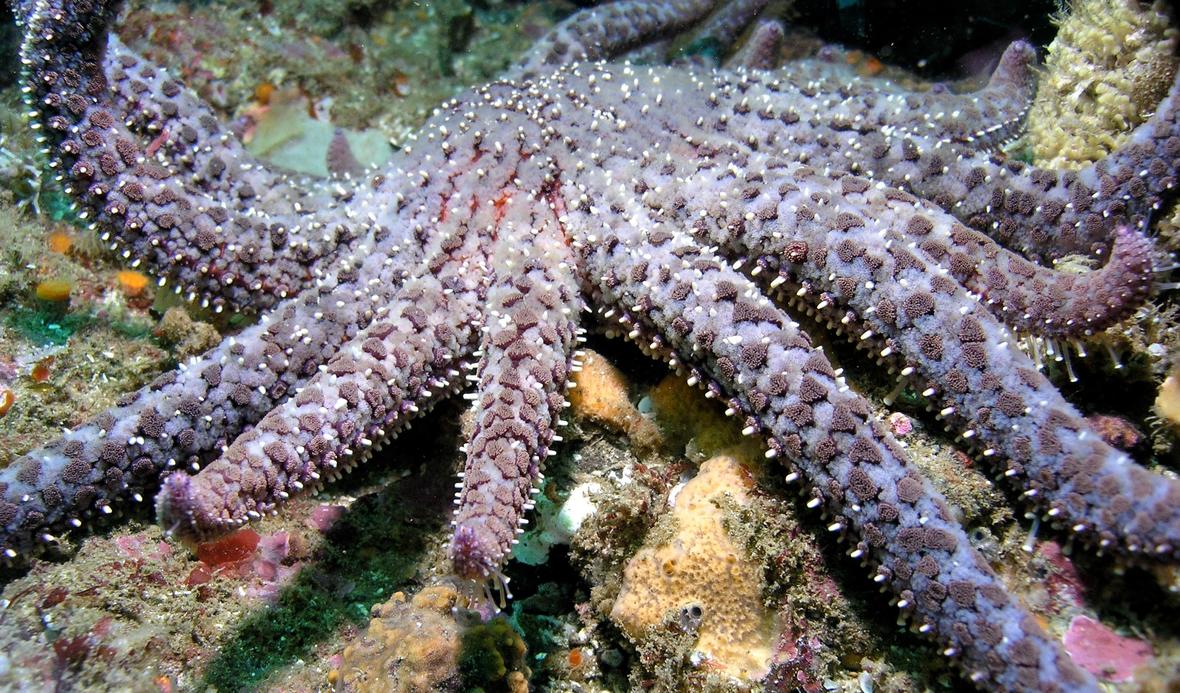 For a sea creature that can grow to the size of a trash can lid with 20 arms covered in suction cups and slime, it seems like the sunflower sea star would be pretty easy to find. But following a population study involving Oregon State University and The Nature Conservancy, it’s been discovered that these beautiful invertebrates are critically endangered, according to a report by OSU Newsroom.
For a sea creature that can grow to the size of a trash can lid with 20 arms covered in suction cups and slime, it seems like the sunflower sea star would be pretty easy to find. But following a population study involving Oregon State University and The Nature Conservancy, it’s been discovered that these beautiful invertebrates are critically endangered, according to a report by OSU Newsroom.
More than 60 institutions participated in studying the sea stars known as Pycnopodia helianthoides, which maintain kelp forests – making them incredibly important for the sustainment of marine life along the entire west coast of North America.
“These sea stars used to be easy to find and were a hit with students and divers because they are unforgettable,” said OSU’s Sarah Gravem, a research associate in the College of Science and the lead author on the study. Gravem doesn’t see a way in which the sea stars can be repopulated “without help like captive rearing and reintroduction and reducing direct harvest and accidental harvest.”
The loss of this species began in 2013 with an epidemic known as “sea star wasting syndrome.” The study believes that there has been a 90.6% decline in their numbers, with no indication of recovery.
According to the study, no sunflower sea stars have been seen in Mexico since 2016, in California since 2018, and very few can be found in Oregon or Washington.
As a predator of purple sea urchins, the sea stars decline has fueled a explosion in urchin populations, which had impeded the growth of kelp forests. This makes for an uncertain future for coastal marine animals and economies.
Study co-author Sara Hamilton, a Ph.D. candidate in the OSU College of Science, said, “Because most people aren’t out in the ocean every day, we don’t realize how much it’s being changed and impacted by humans. We need to think creatively about how to keep our ocean healthy.”
By Sally K Lehman
Do you have a story for The Advocate? Email editor@corvallisadvocate.com


